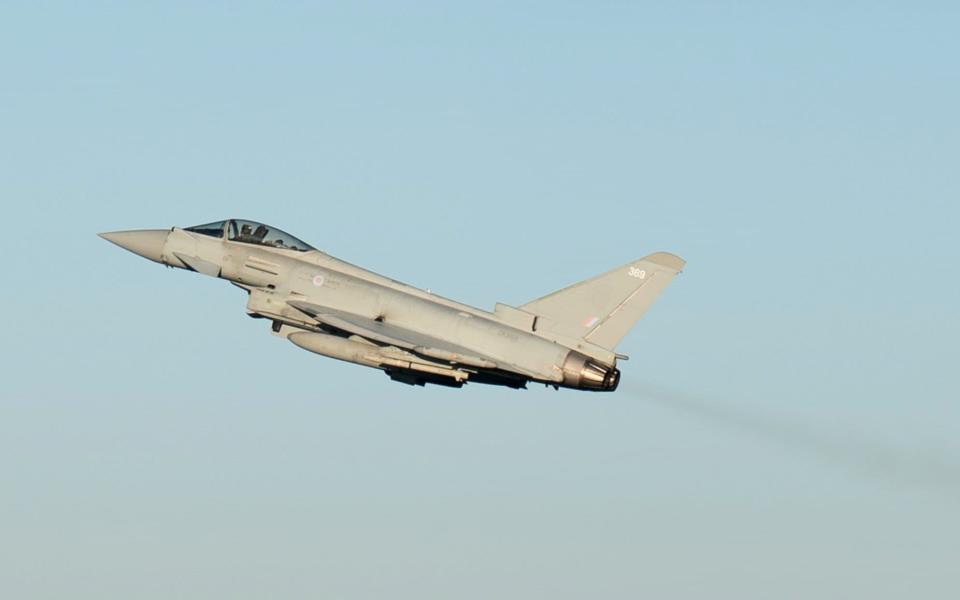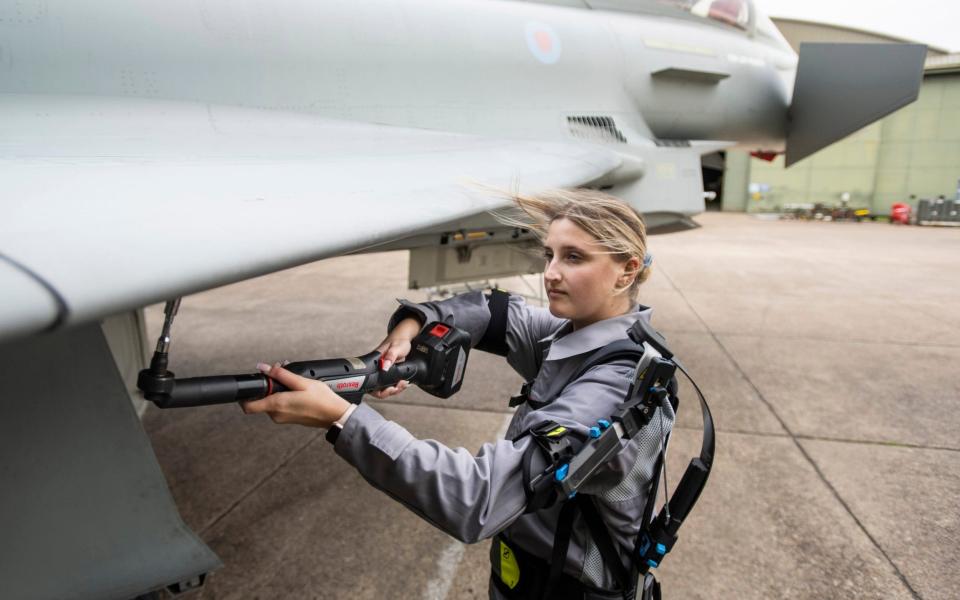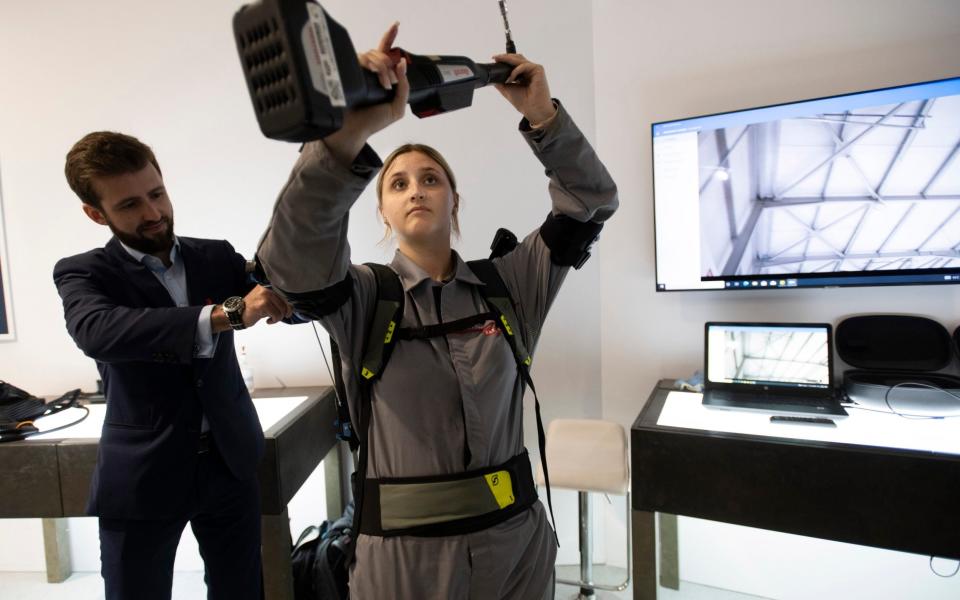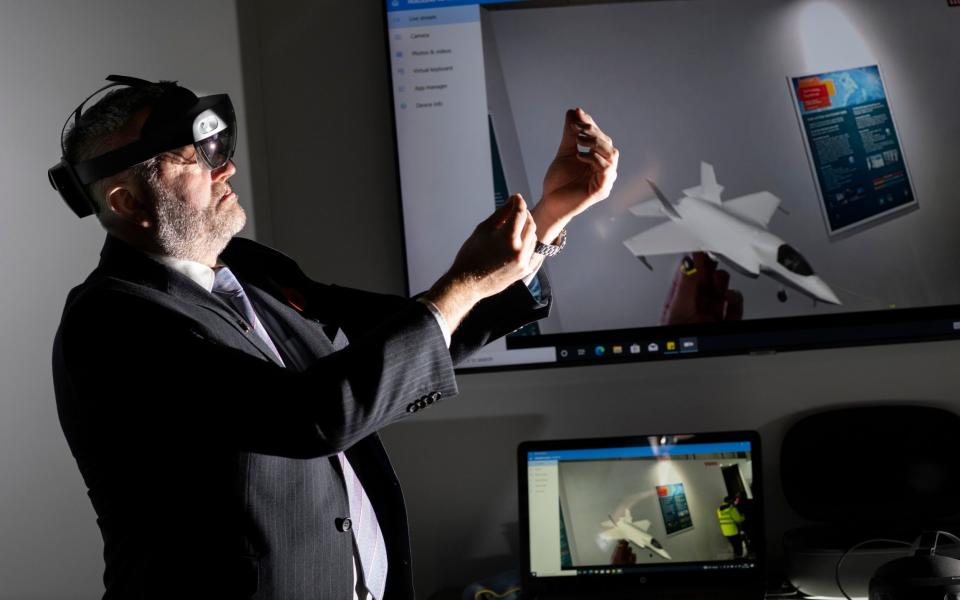How Iron Man suits and robot gloves are helping keep Typhoons in the air

Typhoon jets form the backbone of Britain’s air defences.
They have served the Royal Air Force for more than two decades, with three generations of the Eurofighter Typhoon currently in operation.
The jets will continue to be in service until they are replaced by the RAF’s Tempest fighter in 2035. With the ongoing threat of Russian military action, keeping them in the skies has become more crucial than ever.
“They are used and abused,” says Howard Wheeldon, an independent defence analyst. “Typhoon has got a long, long life ahead of it.”
Each Typhoon is put through forces of more than 9G, or nine times gravity, and must be capable of travelling at speeds of 1,320mph.
Such punishing conditions mean the jets are regularly pulled out of service. In 2018, for instance, German magazine Der Spiegel reported that as few as 10 of the Luftwaffe’s 128 Typhoons were airworthy after maintenance problems, well below the country’s Nato commitment. Official estimates from the year earlier put just 39 of the jets as operational.
Britain has 137 of the aircraft based largely at the Lossiemouth airfield in northern Scotland and Coningsby in Lincolnshire, with a number on standby in case of incursions into UK airspace.

In Coningsby, where BAE Systems has a contract to maintain the RAF’s fleet, engineers have turned to futuristic technologies to help keep Typhoons in the air.
These include a robotic suit, known as an exoskeleton, which gives the wearer superhuman strength. It works by providing additional support to an engineer’s arms and upper body. That means any work done above head height, such as fixing components from the underside of an aircraft, takes less of a toll on muscles.
Similar Iron man-style exoskeletons are being tested for use on the frontline to enable troops to carry extra weight or armour protection.
BAE is also trialling autonomous co-bots, which are free-moving robots that can work in tandem with the exoskeleton users to help with maintenance tasks. The idea is that these cobots will take over some of the more repetitive jobs that require consistency, allowing engineers to focus on highly-skilled tasks.
Meanwhile, mechanical fist can be worn to reduce fatigue. The glove contains five motors which amplify the wearer’s grip. While it can’t bend iron bars, it can help engineers make fewer mistakes and work for longer.
These technologies have helped cut the number of maintenance hours required by 30pc, says Chris Payne, Head of Future Capability for Maintenance at BAE.

“When you go into an area of risk, there's a risk of damage, because we're humans. So how do we minimise damage?” he says.
Data gathered on what parts wear out slower than thought has also cut costs and maintenance time.
Many of the innovations are to cut injury and strain time down, limiting muscle pulls and back and knee trouble which haunt mechanics forced into unnatural positions when replacing a pipe or popping a panel.
Other technologies being trialled for maintenance are more futuristic. For instance, robots with sensitive optical sensors will be used to detect cracks and wear in a fuselage too small for the eye to see.
Another area the company is working on is in augmented reality. Anything from videos to text documents can be fed into an augmented reality headset to be displayed next to the parts being fixed or replaced. This means engineers can have hands-free access to technical documents while carrying out maintenance work.
Such technologies will arrive in time for maintaining newer jets like the F-35 fighter, which is based on the UK’s aircraft carriers.
The next generation of jets like Tempest are computer-designed, making turning 3D models into training programmes much easier.
Martin Topping, UK Typhoon's support delivery director says, each new technology means new challenges, particularly when dealing with warplanes.
An exciting new area for him is Additive Layer Manufacturing (ALM), where parts are made by gradually etching plastics or titanium.onto a base to create a component.

“The bit that we need to get into, and we need to pick up pace on, has been being able to qualify those components onto aircraft,” says Topping. When a welded part is swapped from one made using this process, a careful understanding is needed of how it performs in the air.
If it proves successful, the technology could mean that the days of using welded parts that took weeks to be delivered will be over. A fist-sized component could be made in a machine, unsupervised, in a day and a half.
Half of Tempest parts will be made by ALM, estimates Topping, helping cut costs, time and material waste. Titanium trades at about $9 (£7.40) per kilo but has cost as much as $19 recently amid a squeeze in supply. That makes it ten times more expensive than steel and worth conserving.
Another innovation which is both environmentally-friendly and will save money is the rollout of battery-powered ground power units. Modern jet fighters contain a suite of sensors and computer systems requiring vast amounts of power. In the air, this is tapped from the engines. On the ground, it used to come from a diesel generator costing £20 an hour to run.
Now electric units costing £3 an hour will be used, with much of the difference saved because of their simplicity compared with maintenance-heavy combustion engines.
Whether all this is enough remains a topic for debate. For Wheeldon, another shopping trip for more Typhoons is probably in order before Tempest takes over in more than a decade’s time.
“You can't just keep flogging these aircraft without thinking about what you're going to need in the future, which is Typhoon until at least 2035 and beyond, so they need to spend more money on them.”

 Yahoo Finance
Yahoo Finance 